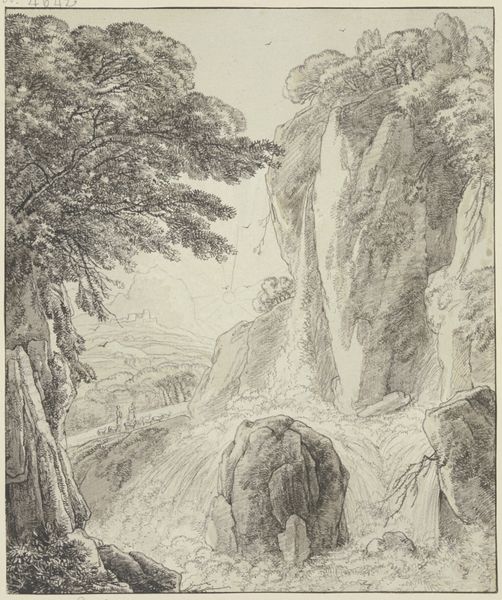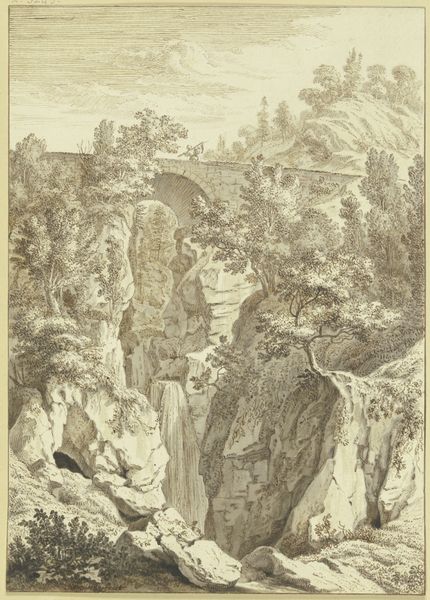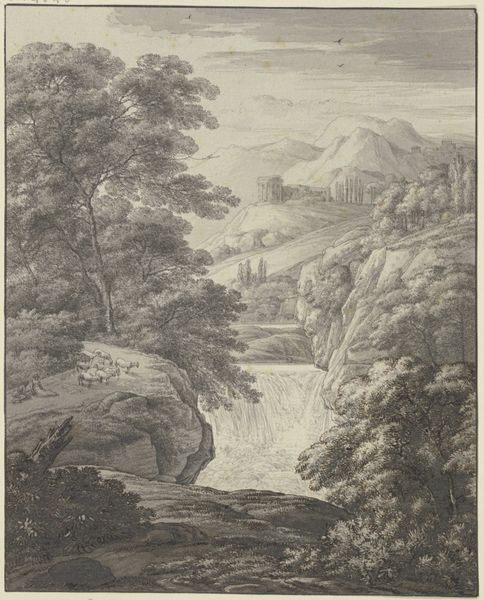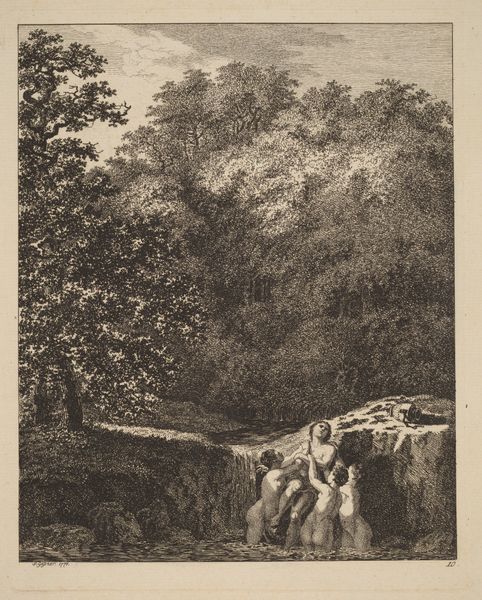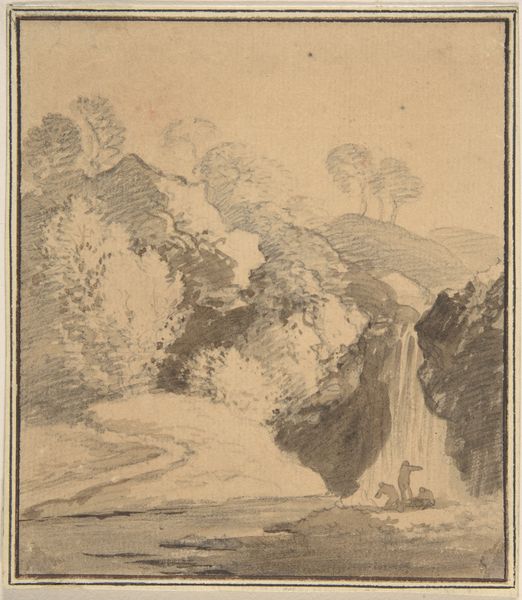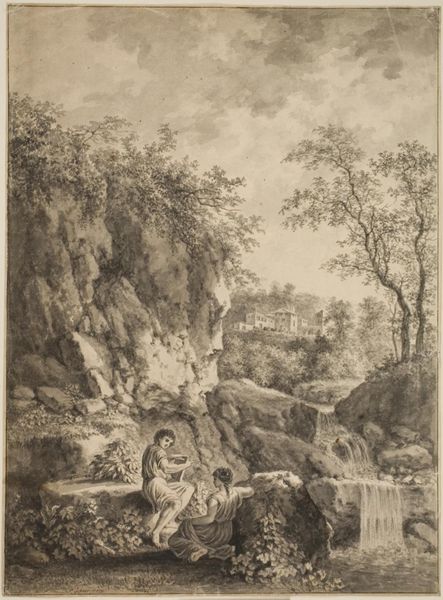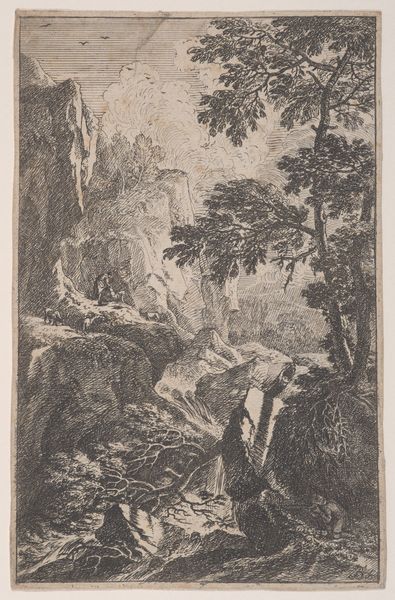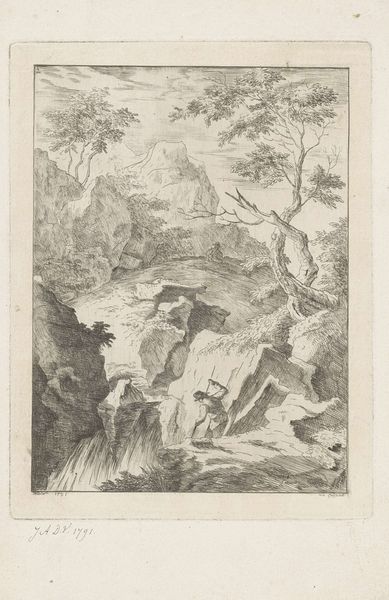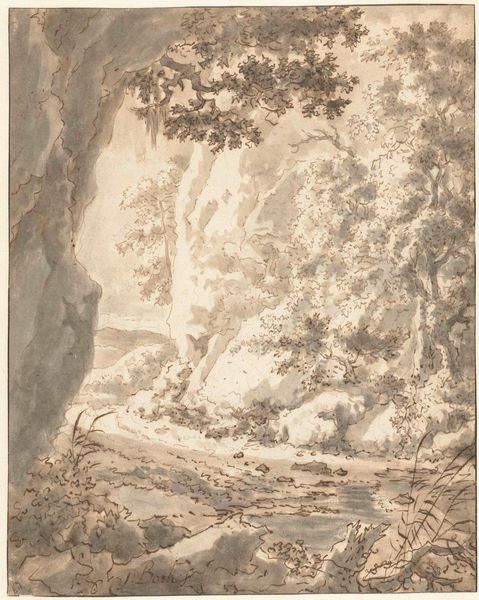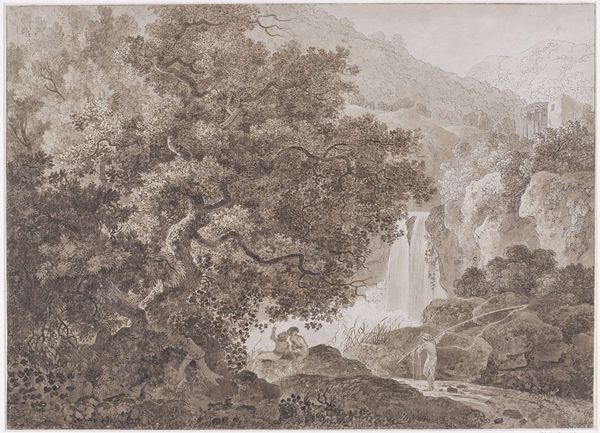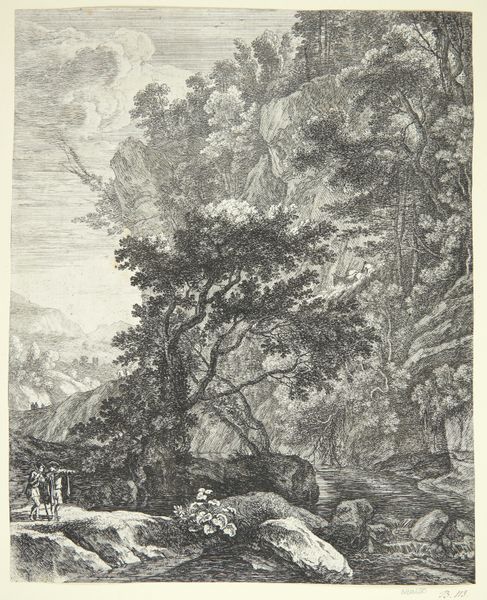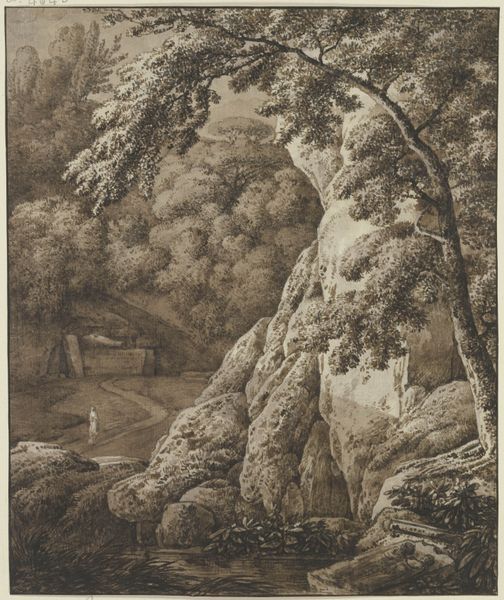
drawing, print, paper, pencil, chalk, graphite, charcoal
#
pencil drawn
#
drawing
# print
#
pencil sketch
#
landscape
#
charcoal drawing
#
paper
#
charcoal art
#
pencil drawing
#
pencil
#
chalk
#
water
#
graphite
#
charcoal
Dimensions: 436 × 227 mm
Copyright: Public Domain
Johann Samuel Bach created this landscape drawing using pen and black ink in the late 18th century. The scene captures the artistic sensibilities of the period, where nature was idealized and infused with symbolic meaning. Made in Germany, the drawing reflects the influence of the Romantic movement, which emphasized emotion and individualism, while simultaneously demonstrating elements of the Picturesque, where ruggedness and wildness was seen as a desirable aesthetic. The waterfall, the rocky cliffs, the figures in classical dress, and the distant architecture all suggest an interest in creating a mood of sublime awe. Bach’s position, as the son of composer Johann Sebastian Bach, gives him an interesting institutional legacy to consider. Art historians often examine travelogues and scientific writing of the time to understand how artists like Bach perceived and represented the natural world. By studying these sources, we gain a deeper understanding of the cultural values and beliefs that shaped artistic expression in the 1700s.
Comments
No comments
Be the first to comment and join the conversation on the ultimate creative platform.

